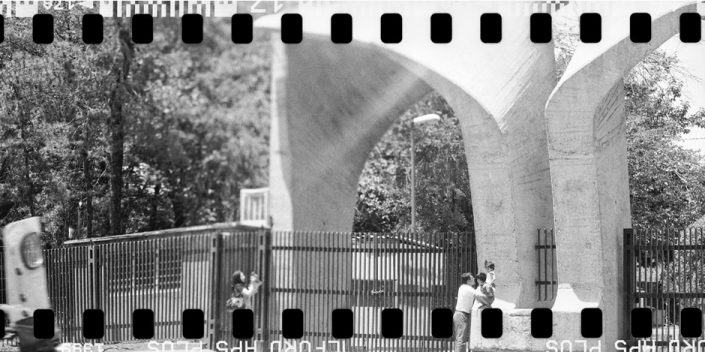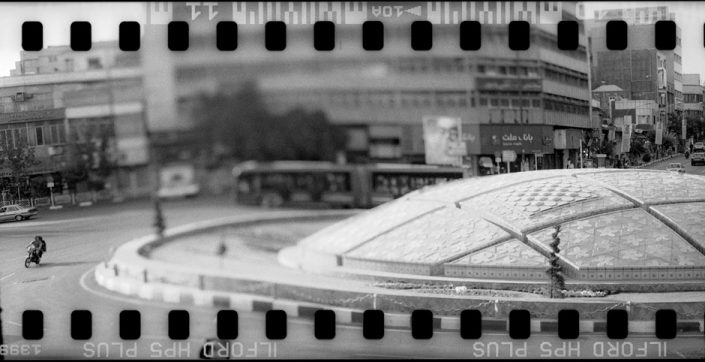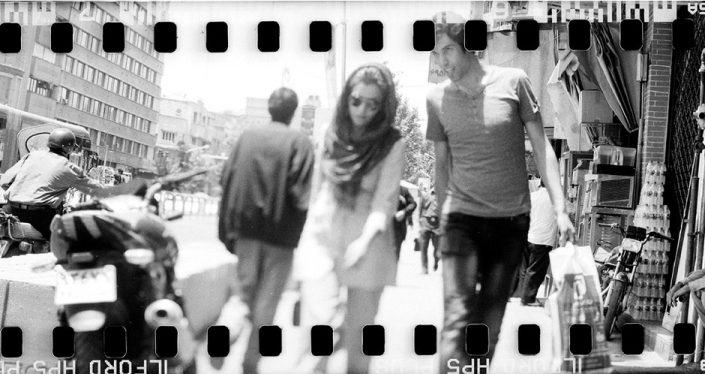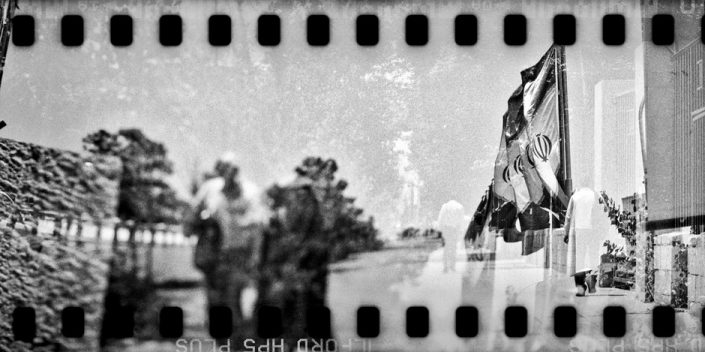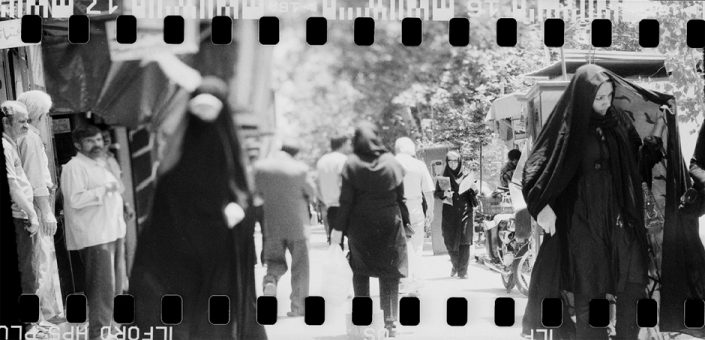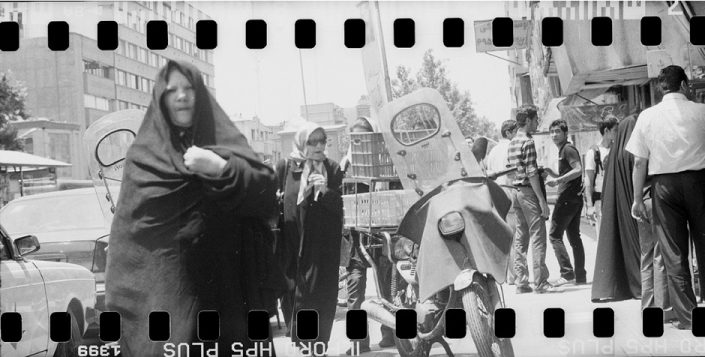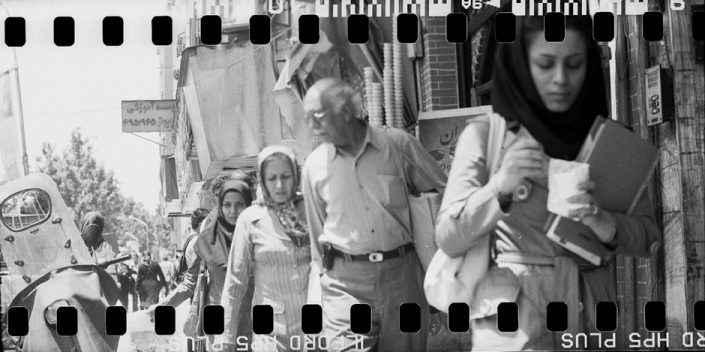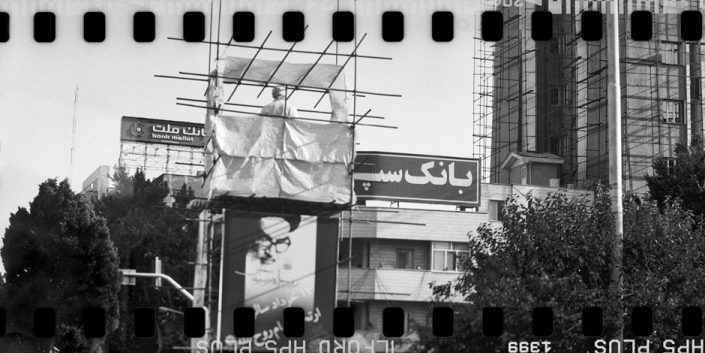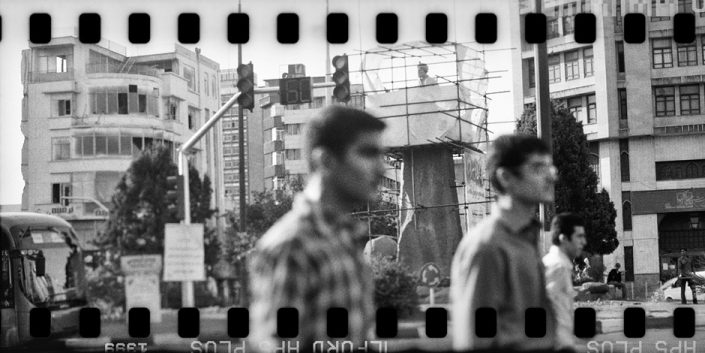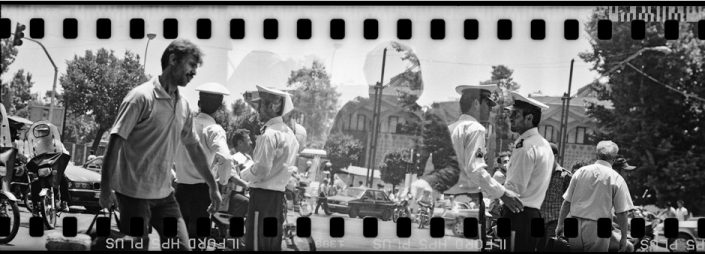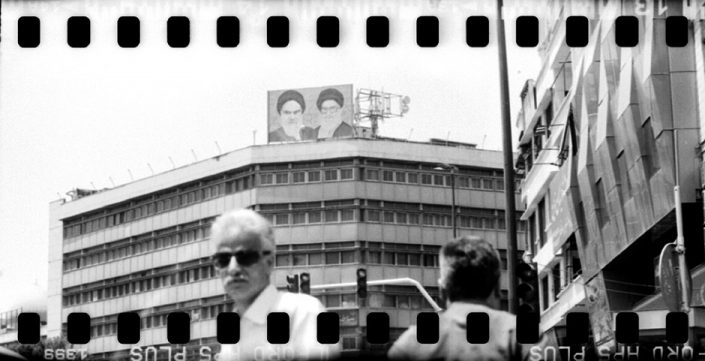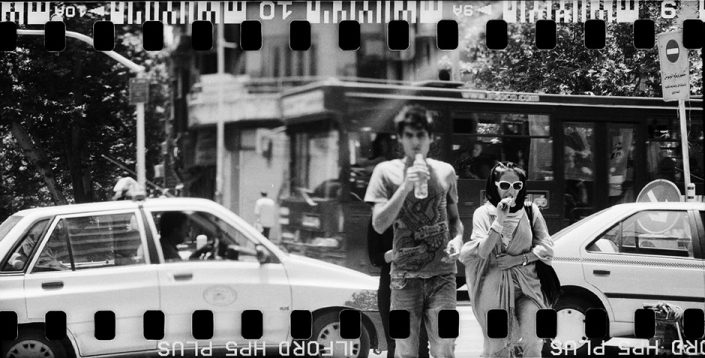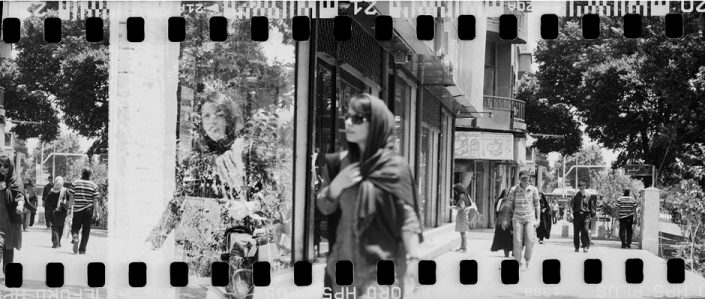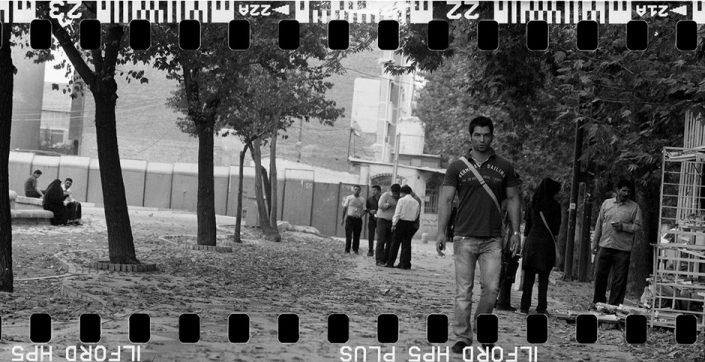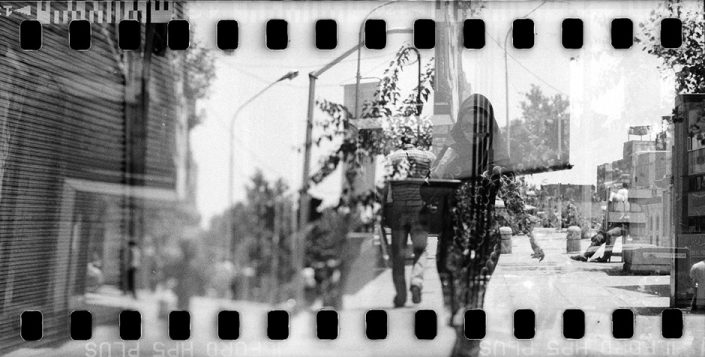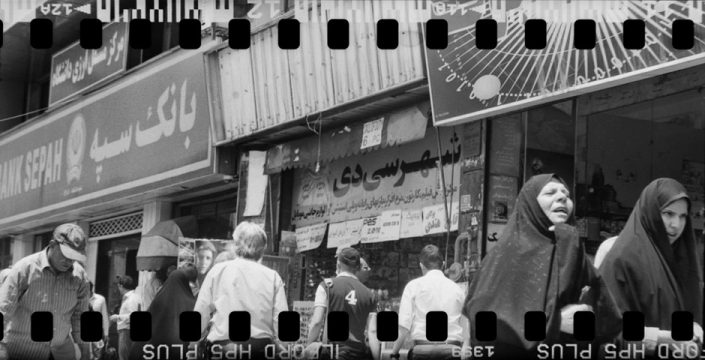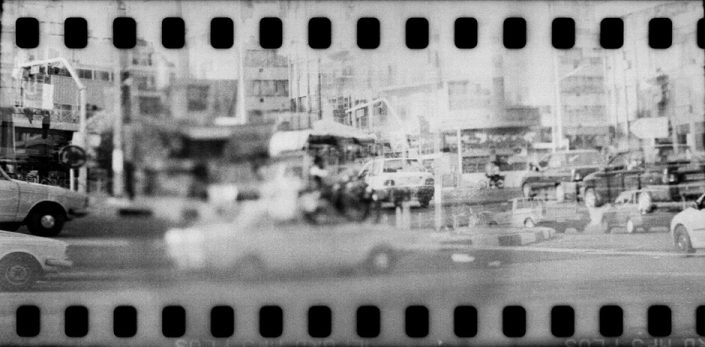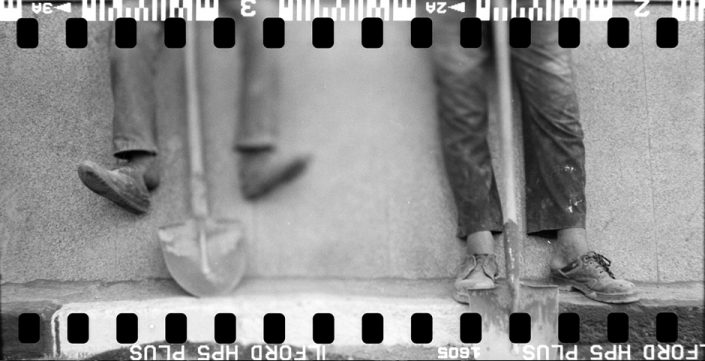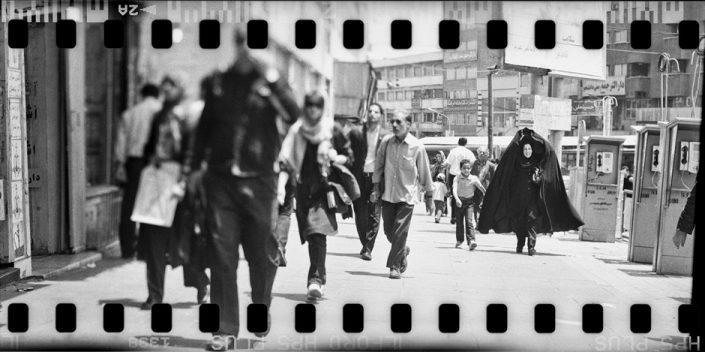Tehran-Enghelab
The distance between Enghelab Square and the Valieasr Intersection was almost the same as the distance between the bedrooms and the living room of a house where a wedding had been held the night before and people were spread out on the floor sleeping. You wake up and want to wash the sleep off. You see people all around you in a haze. You shake your head and whisper, “Hello.” Some of them you don’t recognize, you don’t remember their faces from yesterday; but you know that you should somehow know them. You pass by people from different races and dressed differently from you. You don’t share thoughts with them, despite the fact that you once shared a wound. You have faded memories from all of them. You can find no place like Enghelab Street in all of Tehran; private and public at the same time. Travelers exchange looks as if they know each other. Blurry photography documentary series consist of such memories. This documentary was photographed with a Medium format camera (Mamiya RB67), using 90 and 50 mm fixed lenses. In the darkroom I took the 120 negatives out from their reel, replacing them with 135 negatives, and then I placed the reel into a medium format camera. To prevent the framing mis-selection problem I put a 67 mm paper board behind the lens, this way the framing of the pictures would be exactly the same (according to the size). The lack of clarity is inevitable. The 135 negative is set into the camera convexly and since there is no standard frame in such cameras to hold the reel still, it causes blurriness. Photographic film is very sensitive to light; although some black dots are left on the film while taking pictures. Just like how the human memory works. It keeps some memories and lets go of the rest. Some people are blurred while others are captured exactly as they are. Remembering the details of some places while other places are faded. Even the black dots left on the film are a part of the picture, and so they become forgotten parts of our memories.
